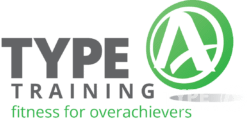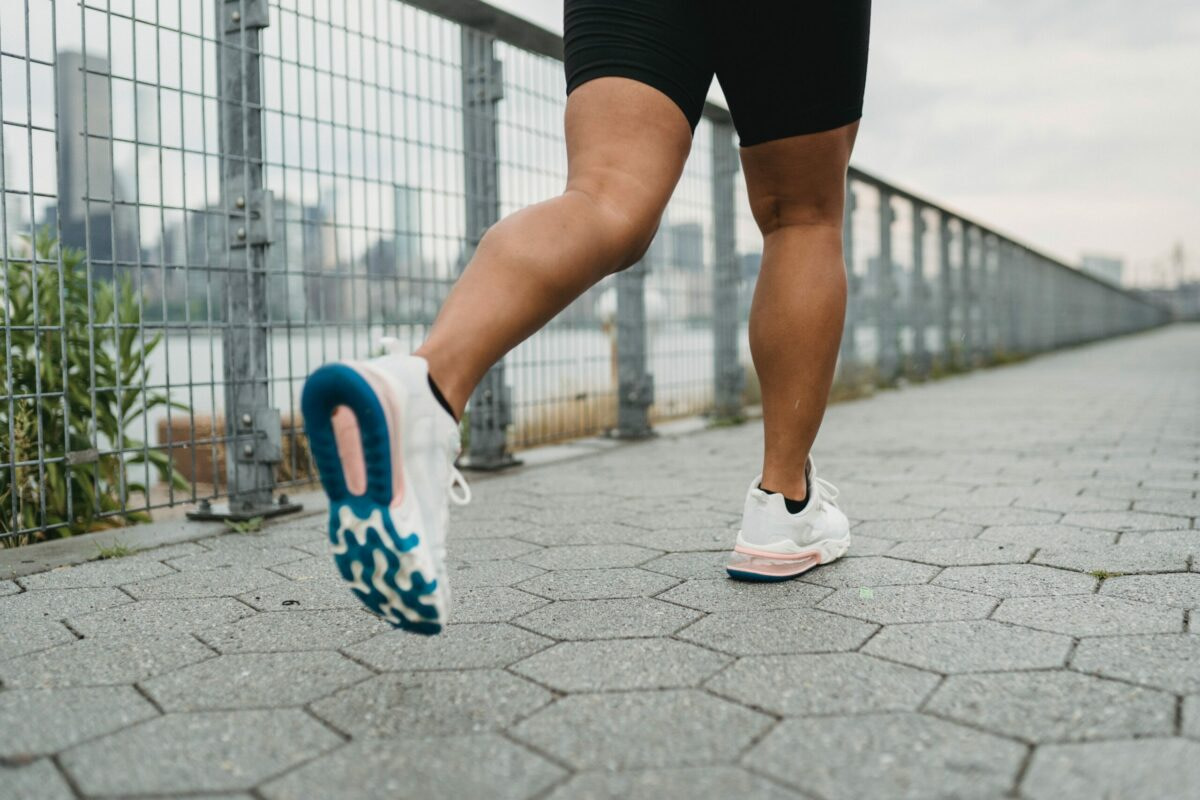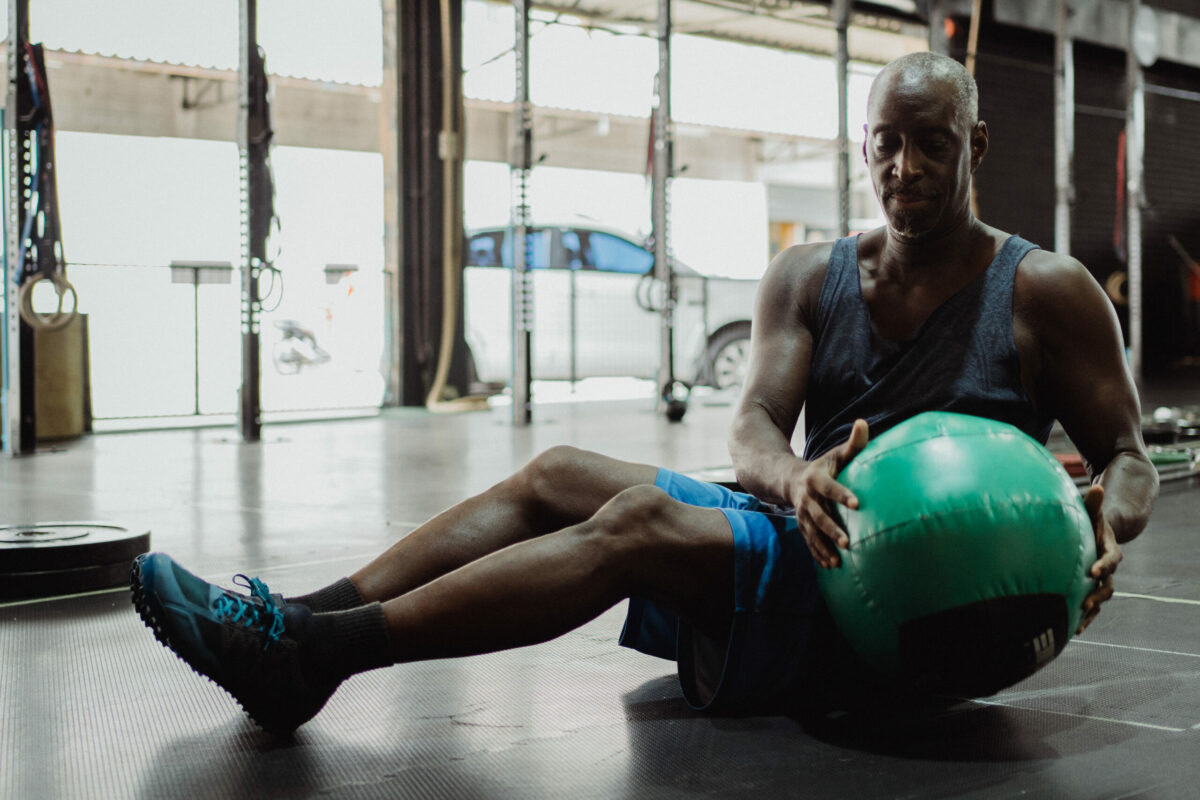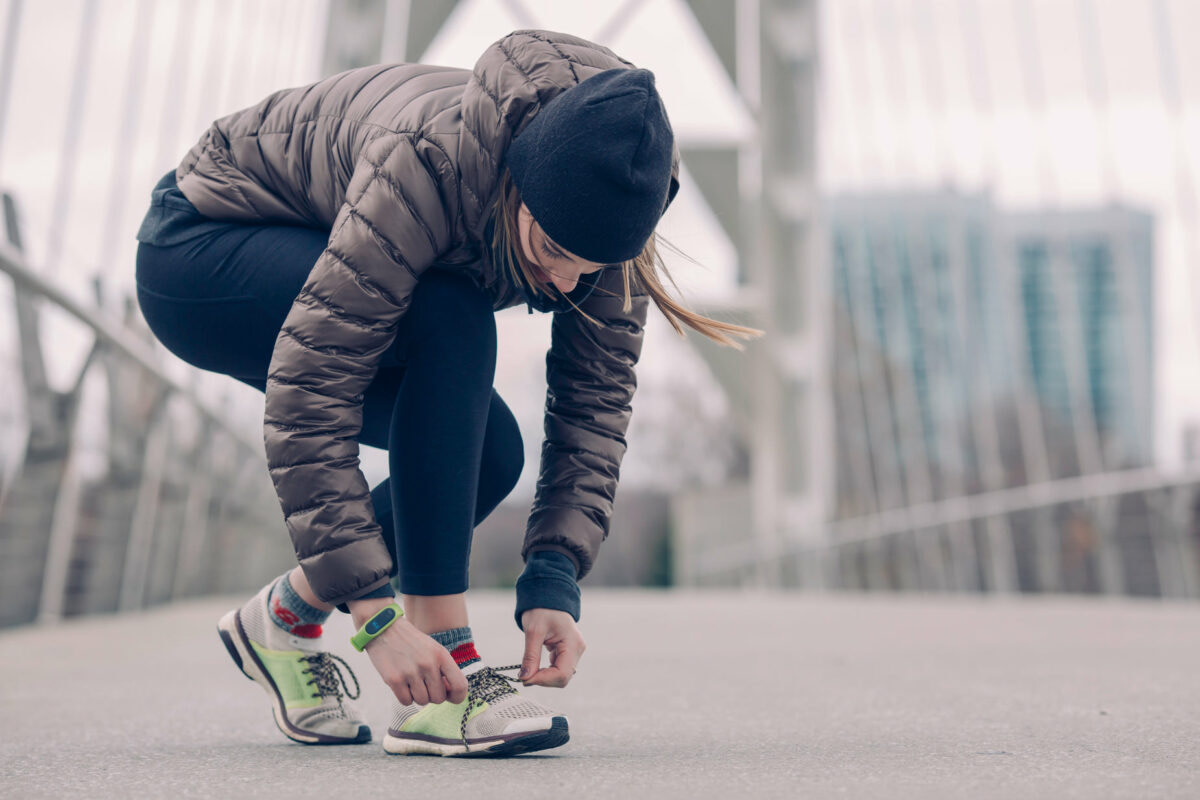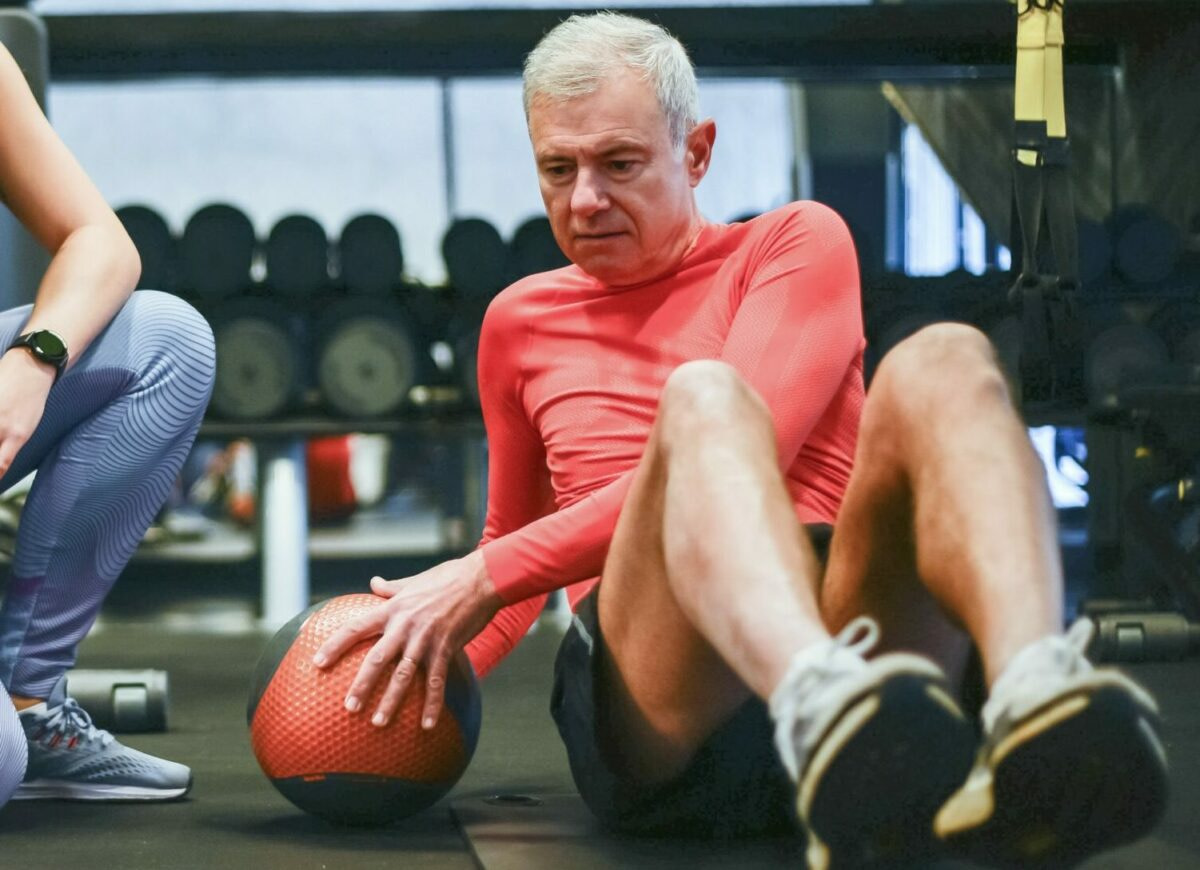Strength training is not just for bodybuilders—it’s an essential component for runners looking to improve performance and prevent injury. Integrating strength exercises into your routine can lead to significant enhancements in your stride, speed, and endurance. To get the most out of these exercises, it’s important to target the muscles runners use most and ensure that your training program complements your running regimen, rather than working against it.
While running primarily builds cardiovascular endurance, strength training focuses on muscular endurance and power, which are important for conquering hills and sprinting to the finish. Runners should also pay attention to their core and upper body, not just their legs, as a strong core supports better posture and breathing, and a well-conditioned upper body can improve overall stability. Whether you’re lifting weights, using resistance bands, or leveraging bodyweight exercises, the aim is to build a balanced body that can withstand the demands of mile after mile.
Fundamentals of Strength Training for Runners
To optimize your running performance and reduce injury risk, integrating strength training into your routine is essential. Here, you’ll get to grips with how muscles function during running, learn about the performance benefits of strength training, and understand the balance between resistance exercises and cardiovascular work.
Popular posts:
Understanding the Role of Muscles in Running
Your muscles are the engines that power your runs. Strength training enhances the force and endurance of these engines. Primarily, your leg muscles, including the quadriceps, hamstrings, calves, and glutes, are engaged while running. By conditioning these muscles, you can improve your running economy, allowing for better performance with less energy expended.
The Benefits of Strength Training for Running Performance
Incorporating strength training into your routine boosts your running efficiency and speed. Strength workouts contribute to stronger connective tissues, which can lead to fewer injuries. As you build muscle, you also increase your metabolic rate, which can help with weight management, an important factor for runners aiming to stay light and quick on their feet.
Resistance Training Versus Cardio for Runners
While cardio improves your cardiovascular health and stamina, resistance training is key for building the muscle strength necessary for powerful strides and uphill runs. You don’t have to choose one over the other—both can be part of a well-rounded fitness approach. Incorporating both types of training can lead to a more balanced enhancement of your overall performance as a runner.
Designing a Runner’s Strength Training Program
Creating a strength training program that complements your running routine involves two critical steps: setting achievable goals and finding equilibrium between strength exercises and running sessions. The right blend will enhance your running performance without causing overtraining or injury.
Setting Realistic Strength Goals
To optimize your strength training program, begin by establishing clear and attainable goals. Consider factors like your running experience, the distance you race, and your personal time commitments. For instance, if you’re aiming to improve your marathon time, focus on exercises that enhance endurance and muscular stability, such as squats and lunges. Your goals should not only be realistic but also measurable, so you can track your progress and stay motivated.
Balancing Strength Workouts with Running
Your strength workouts should complement, not compete with, your running. To achieve this balance, strategically schedule strength sessions so they do not immediately precede or follow intense runs. Instead, plan to do them on the same day as your easy runs or on non-running days. This scheduling prevents overexertion and allows appropriate recovery time—critical for physiological adaptations and performance gains. Remember, your program is about creating synergies between exercise and rest for optimal results.
Essential Strength Exercises for Runners
Incorporating strength exercises into your running routine is crucial for improving performance and reducing the risk of injury. Focus on exercises that target your core, glutes, legs, and hips for optimum results.
Squats and Variations
Squats are foundational for runners, helping to build strength in your quads, glutes, and hamstrings. Start with basic bodyweight squats to ensure proper form. As you advance, explore variations such as goblet squats or jump squats for added intensity and to target different muscle groups effectively.
- Bodyweight Squat: Stand with feet hip-width apart and sit back into a squat, keeping your knees over your toes.
- Goblet Squat: Hold a kettlebell or dumbbell close to your chest and perform a squat, maintaining an upright posture.
Deadlifts and Their Importance
Deadlifts are pivotal for developing your posterior chain, which includes the hamstrings, glutes, and lower back. This move helps in correcting imbalances and increasing hip stability, which is essential for runners.
- Standard Deadlift: With a barbell or dumbbells, hinge at the hips to lower the weight while keeping your back straight, then return to standing.
Lunges and Single-Leg Moves
Lunges and single-leg exercises enhance your balance and coordination, as running is essentially a series of single-leg stands. These exercises also strengthen individual legs, preventing overcompensation.
- Forward Lunge: Step forward into a lunge, keeping your front knee over the ankle and back knee just above the ground.
- Single-Leg Deadlift: Balance on one leg while hinging at the hip to lower the upper body, extending the other leg behind.
Planks and Core Stability Exercises
A strong core is vital for runners as it maintains your stability and alignment during runs. Planks are excellent for building your core and promoting core stability.
- Forearm Plank: Place your forearms on the ground, elbows under shoulders, and hold your body in a straight line.
- Side Plank: From the plank position, rotate into a side plank, lifting one arm towards the ceiling, and stabilize.
Remember, consistency with these exercises will lead to improvements in your running form and power.
Advanced Strength Training Techniques
Optimizing your strength training is crucial for enhancing your running performance. Advanced techniques focus on power, muscle group engagement, and structured intensity variations to maximize benefits.
Incorporating Plyometrics for Power
Plyometric exercises help you to develop explosive power, vital for increasing your running speed. Key plyometrics like jump squats and burpees stimulate your major muscle groups, providing the force you need to push off the ground swiftly and efficiently.
Utilizing Compound Movements
Compound movements involve multiple muscle groups and joints, leading to more balanced strength development. When lifting in your routine, focus on movements like deadlifts and bench presses, which work for several major muscle groups at once, boosting overall performance.
Periodization and Cycling Intensity
Carefully cycling the intensity of your workouts through periodization can lead to better strength gains and prevent overtraining. Structure your training into phases, with each one focusing on different attributes such as strength, endurance, or power to optimize performance gains over time.
Preventing Injuries with Strength Training
Strength training can be a powerful tool for reducing the risk of running-related injuries. By focusing on specific muscle groups, addressing muscular imbalances, and strengthening the supporting structures around joints, you can fortify your body against common ailments that plague runners.
Targeting Running-Specific Muscle Groups
To build resilience against injuries, it’s essential to target muscle groups that are utilized during running. Incorporating exercises that enhance the strength and endurance of your quads, hamstrings, and calf muscles can help protect your knees and IT band from overuse injuries. For instance, squats and lunges are fundamental for quadriceps and hamstring development. The right strength program is a vital component of your training regime.
Addressing Muscular Imbalances
Muscular imbalances can lead to improper running form, which often results in injury. By evaluating your own strengths and weaknesses, you can tailor your workout to fortify weaker muscle groups that may be causing imbalances. Exercises like single-leg deadlifts assist in equalizing strength on both sides of your body, reducing the risk to your knees and IT band caused by disproportionate forces.
Strengthening Joints and Connective Tissue
It’s not just muscles that benefit from strength training—your joints and connective tissues like ligaments and tendons also become more robust. Low-impact, high-repetition exercises, such as leg presses or calf raises, can be very effective. Importantly, these exercises can aid in thickening and strengthening connective tissues, which can provide better joint stability and resilience against injuries.
By incorporating these focused training strategies, you’ll create a more injury-resistant body that’s better prepared for the demands of running.
Warming Up and Cooling Down
Properly preparing your body for a run and aiding recovery afterwards are pivotal in any running program. Incorporating dynamic warm-up routines can enhance your performance, while effective cooling down can speed up muscle recovery.
Dynamic Warm-Up Routines
Dynamic warm-ups increase blood flow, heat the muscles, and prepare you for high-intensity activities. Before you hit the pavement, begin with about five to ten minutes of light aerobic exercise such as a brisk walk or slow jog to loosen the muscles. Then, transition into dynamic exercises—movements that mimic your running motion.
For example:
- Leg swings: 10 reps each leg
- Walking lunges: 1 set of 10 reps
- Arm circles: 6 forward, 6 backward each arm
These exercises help warm up your body and prepare you for your run.
Cooling Down and Muscle Recovery
Cooling down is just as crucial as the warm-up. After a run, indulge in a five to ten-minute easy jog or walk to gradually lower your heart rate. Follow with static stretches focusing on major muscle groups—hold each stretch for about 30 seconds to promote muscle recovery.
Key cooling down exercises:
- Quad stretch: Hold for 30 seconds each side
- Hamstring stretch: Hold for 30 seconds
- Calf stretch: Hold for 30 seconds each side
Remember, your cool-down routine is your body’s time to recover and prepare for the next workout, so don’t skip it.
Strength Training at Home Vs. Gym
When considering strength training, you have the option to embrace the convenience of home workouts or take advantage of the diverse range of equipment at a gym. Your choice will depend on your personal goals, space availability, and budget.
Bodyweight Exercises for Runners at Home
Bodyweight exercises are a practical starting point for strength training without the need for a gym membership. You can achieve a full-body workout that enhances your running performance through exercises such as push-ups, planks, lunges, and squats. For instance, squats improve your leg and core strength, which are essential for running efficiency. Additionally, glute bridges target your glutes and hamstrings, translating to increased power with each stride.
- Core Exercise:
- Planks (Hold for 30 seconds to 1 minute)
- Upper Body Exercise:
- Push-ups (Aim for 10-15 reps)
- Lower Body Exercises:
- Squats (Aim for 15-20 reps)
- Lunges (10-12 reps each leg)
- Glute Strength:
- Glute Bridges (15 reps)
Equipment to Invest in for a Home Gym
If you prefer the privacy of a home gym, consider investing in basic equipment to enhance your strength training. Resistance bands can add difficulty to bodyweight exercises and are excellent for runner-specific movements that target your hips and thighs. A set of dumbbells can also be versatile, ideal for upper and lower body exercises and can help improve your muscular endurance. A kettlebell is another worthwhile investment, perfect for dynamic movements such as kettlebell swings, which can increase your explosive power.
- Recommended Equipment:
- Resistance Bands: Incrementally increase the intensity of your workouts.
- Dumbbells: Versatile for various exercises; start with a comfortable weight.
- Kettlebell: Great for building power; a starting weight of 15-20 pounds may be suitable.
Remember, your choice between home and gym workouts should align with your running goals, financial capacity, and personal preference for a training environment. Whether at home or in the gym, incorporating strength training is crucial for improving your running economy and reducing the risk of injury.
Importance of Core Strength
Your core is essential for stability and balance during running. Effective core training can result in less fatigue, improved endurance, and a stronger, more balanced stride.
Core Exercises to Enhance Stability and Balance
Developing a strong core is more than just doing crunches. Your core consists of several muscle groups including the abs, obliques, lower back, and hip flexors. By strengthening these areas, you’ll enhance your overall stability and balance, which is crucial for runners.
- Planks: A fundamental exercise that targets the whole core. Start with 30 seconds and slowly build up your time.
- Abdominal Crunches: Focus on engaging your abs to improve muscle tone.
- Oblique Twists: These target the side muscles and aid in rotational stability, important for directional changes.
Incorporating these exercises into your routine can lead to significant improvements in your running form and efficiency. Balancing on one leg and performing single-leg exercises can also challenge your core stability, promoting better balance and coordination.
Lower Body Strength for Runners
Developing lower body strength is crucial for enhancing your running efficiency. Focusing on exercises like squats and lunges will increase power and stability, allowing you to run more effectively.
Squats for Power and Stability
Squats are a comprehensive exercise that target the quadriceps, hamstrings, and glutes, contributing to increased leg power and overall running stability. Here’s how to incorporate them into your routine:
- Position: Stand with feet shoulder-width apart, toes slightly turned out.
- Execution: Lower into a squat, keeping your chest up and knees over toes.
- Frequency: Perform 3 sets of 8 to 12 reps, ensuring proper form.
Integrating squats into your training plan can make your strides more powerful and reduce the risk of injury by improving your core and lower body strength.
Lunges for Hip and Leg Strength
Lunges are effective for targeting the muscles around the hips and enhancing leg strength. They can directly contribute to a more efficient and stable running form. Here’s a simple lunge routine:
- Step forward: Take a step forward and lower your hips until both knees are bent at a 90-degree angle.
- Alignment: Make sure your front knee is directly above your ankle.
- Repetition: Complete 3 sets of 8 to 12 reps for each leg.
Regularly performing lunges will help in building the necessary leg strength for a powerful take-off and landing in each step of your run.
Upper Body Training for Runners
While legs power your stride, a strong upper body is essential for maintaining good form and endurance during a run.
Why Runners Should Train the Upper Body
Your upper body plays a critical role in running efficiency. Strong shoulders, a robust core, and a resilient back help you maintain posture and balance. Moreover, when your legs grow tired, your upper body can help carry you through, making upper body strength vital for long-distance runners.
Effective Upper Body Exercises for Runners
To fortify your upper body, incorporate push-ups and rows into your fitness regime. Push-ups engage your chest, shoulders, and triceps, improving your arm drive while you run. On the other hand, rows work your back muscles and biceps, enhancing your arm swing and posture.
Push-ups:
- Standard Push-Up: Aim for 3 sets of 10-15 reps.
- Incline Push-up: Begin with 3 sets of 8-12 reps.
Rows:
- Dumbbell Row: Complete 3 sets of 10 reps on each side.
- Resistance Band Row: Try for 3 sets of 12-15 reps.
Remember, consistency in these exercises will help you develop the upper body strength crucial for running.
Stretching and Flexibility
To optimize your running performance and aid in recovery, integrating both dynamic and static stretching into your routine is crucial. These practices not only enhance flexibility but also prepare your muscles for the demands of running and help with post-run recovery.
Incorporating Dynamic Stretching Pre-Run
Dynamic stretching involves active movements where joints and muscles go through a full range of motion. These stretches prepare your body for the intensity of a run by increasing blood flow, improving flexibility, and reducing the risk of injury.
- Leg Swings: Stand on one leg and swing the other leg forward and back. Do 10-15 swings per leg.
- Lunges with a Twist: Step forward into a lunge and rotate your upper body towards the leg that is in front. Perform 8-10 lunges on each side.
By implementing these types of dynamic stretches, you’re mimicking running movements which can improve your pliability and running form.
Static Stretching for Post-Run Recovery
Static stretching involves holding a stretch for an extended period, usually around 15-30 seconds. This type of stretching is best performed after running to help loosen tight muscles and promote recovery.
- Hamstring Stretch: Sit on the ground with one leg extended, fold the other leg in, and reach for your toes. Hold for 30 seconds per leg.
- Quad Stretch: While standing, pull one foot towards your buttocks and hold your ankle. Keep your knees together and hold for 30 seconds, then switch legs.
Incorporating static stretches after your runs can reduce muscle tightness and enhance overall flexibility, which in turn contributes to preventing injuries and improving your running efficiency.
Nutrition and Hydration for Strength Training
To maximize your strength training results, focusing on proper nutrition and hydration is essential. Your diet impacts muscle repair and growth, while hydration keeps your performance steady during intense workouts.
Eating for Muscle Repair and Growth
Proper nutrition is critical for muscle repair and building muscle mass after strength training. Consume a balanced mix of proteins, carbs, and fats to fuel muscle recovery:
- Proteins: Include lean sources such as chicken, fish, tofu, and legumes. Aim for about 1.2 to 2.0 grams of protein per kilogram of body weight to aid in muscle repair.
- Carbohydrates: They are crucial for replenishing glycogen stores; whole grains, brown rice, fruits, and vegetables are excellent choices.
- Fats: Don’t shy away from healthy fats found in nuts, seeds, avocados, and olive oil; these support overall health and can provide energy for longer workout sessions.
Staying Hydrated During Intense Workouts
Hydration plays a pivotal role in your performance and recovery during and after intense workouts. For endurance athletes, maintaining hydration is especially important, as even a small decrease in hydration can affect your strength training negatively.
- Water: Aim to drink water throughout the day, not just during workouts. The amount will vary depending on intensity and duration, but starting with at least half your body weight in ounces per day is a good baseline.
- Electrolytes: During longer or more intense sessions, incorporate drinks that replenish electrolytes to maintain nerve and muscle function. Products like electrolyte-infused waters and sports drinks can be beneficial.
Overcoming Plateaus in
When you reach a plateau in your strength and running progress, it’s crucial to reassess and modify your routine to continue improving. Let’s explore how changes to your workouts can reignite your advancement.
Changing Your Routine to Continue Improving
- Introduce Variety: Your muscles adapt to the stresses you recurrently place on them, so altering your workout routine can stimulate growth. This could mean incorporating new strength exercises or different running workouts. For example, try fartlek runs to shake up your running routine, or for strength, add new resistance training moves you’re not accustomed to.
- Adjust Intensity: Sometimes, increasing the intensity of your workouts can help push past a plateau. Implement more challenging sets, such as high-intensity interval training (HIIT), or increase the weight you lift to boost your strength further.
- Optimize Recovery: Adequate recovery is as important as the training itself. Ensure you’re getting enough sleep and consuming nutrient-rich foods like yogurt and eggs to aid muscle repair and prepare for the next workout.
- Focus on Weak Points: Identifying and working on your weaknesses can lead to overall improvement. If you find hills challenging, dedicate sessions to hill repeats. Similarly, if a certain muscle group is lagging, target it with specific strength exercises.
Remember, progress is not always linear. Periodic changes in your training are essential to continue advancing your running and strength capabilities, as well as to maintain your motivation and enthusiasm for the sport.
Recovery Techniques for Runners
Effective recovery is crucial for minimizing fatigue and improving your performance as a runner. Dive into active recovery strategies and how to optimize rest days to bolster your strength training regimen.
Active Recovery
Active recovery plays a vital role in your training plan, helping to reduce soreness and promote blood flow. Consider incorporating easy activities like a relaxed jog, swimming, or cycling at a low intensity the day after a demanding run. These activities should be performed at a pace that allows for complete conversation, ensuring you’re staying in the correct zone for recovery. It has been recommended to engage in gentle movement like a casual walk or light stretching to further aid in the recovery process.
Utilizing Rest Days
Rest days are just as important as your active days; they allow your body the time necessary to repair and strengthen itself. On rest days, aim to disconnect from running mentally and physically to fully recover. This means prioritizing sleep, focusing on hydration, and consuming nutritious foods that support muscle repair, such as lean proteins and complex carbohydrates. Moreover, consider practices like yoga or meditation to help relax both your body and mind, reinforcing the recovery effect.
Personal Trainer or Running Coach
Working with a personal trainer or running coach can be transformative for your running regimen. The expertise and personalized attention they provide are essential for ensuring good form and preventing injuries.
When to Consider Professional Guidance
You may reach a point where self-guided workouts aren’t producing the desired results, or you’re uncertain about the techniques required for effective strength training. Here are specific scenarios where seeking professional guidance can be particularly beneficial:
- Navigating Plateaus or Performance Declines: If your progress has stalled or you’re not seeing improvement, a coach can identify issues in your routine and push you past the plateau.
- Injury Prevention or Recovery: Recovering from an injury or wanting to avoid one altogether? A coach or trainer can tailor exercises that maintain or restore your form and strength safely.
- Form and Technique Optimization: Even minor adjustments in your technique can lead to significant performance gains and reduced injury risk. Professional guidance ensures that you are executing movements with optimal form.
- Personalization of Training Programs: A standardized training program isn’t always effective. Your coach can design a plan that aligns with your specific goals and adapts as those goals evolve.
- Accountability and Motivation: Having a dedicated professional keeping you accountable can help maintain a consistent training schedule and boost your motivation to reach new milestones.
Professional guidance from a personal trainer or running coach provides a structured and customized approach to your strength training, ensuring that your efforts align with your goals and capabilities.
Strength Training for Beginner Runners
As a beginner, your aim should be to build a solid strength base that complements your running. Incorporating foundational exercises into your routine can enhance your running efficiency and reduce injury risks.
Foundational Exercises to Start With
- Squats: Squats are crucial for developing leg strength. Begin with bodyweight squats, ensuring proper form, before progressing to weighted versions.
- Planks: A strong core is essential for stability and power. Start with the basic forearm plank, holding it for time and focusing on keeping your body in a straight line.
- Lunges: Perfect for targeting the quadriceps and glutes. Step forward into a lunge and drop your hips so both knees are bent at a 90-degree angle.
- Deadlifts: This exercise will help you build a strong back and hamstrings. Use light weights initially to focus on your form.
- Push-Ups: An effective bodyweight movement to strengthen the chest, shoulders, and triceps. If necessary, begin with knee push-ups to build strength.
Remember, proper form is more important than the amount of weight you lift. Focus on mastering the technique of each exercise with a clear mind to establish your strength base effectively.
Adapting Strength Training As You Age
As you age, your approach to strength training needs to evolve to maintain performance and ensure safety. Here’s how you can adapt your exercises to support longevity in running.
Modifications for Longevity in the Sport of Running
Age and Strength Training: Your body’s response to exercise changes as you get older. To support your running career, it is crucial to incorporate low-impact strength workouts that reduce the strain on joints and tend to be easier on your body.
- Low-Impact Exercise Examples:
- Swimming
- Cycling
- Yoga
- Pilates
Adapting Exercises: Each exercise can and should be tailored to your current fitness level and age-related dexterity.
- Adjust squat depth to minimize knee stress.
- Use resistance bands instead of heavy weights for less joint impact.
- Focus on controlled movements to maximize muscle engagement and reduce injury risk.
Integrating Flexibility and Balance: Prioritize exercises that enhance flexibility and balance to prevent falls and improve muscle coordination.
- Incorporate daily stretching routines.
- Add balance exercises, such as single-leg stands, to your training.
Intensity and Recovery: Your body may require more time to recover with age. Consequently, consider:
- Reducing the overall intensity of workouts.
- Increasing rest periods between sets.
- Allocating more recovery days between strength sessions.
Understanding these modifications and respectfully acknowledging the natural changes in your body will help sustain your passion and ability in the sport of running for years to come.
Technology and Tools to Enhance Training
Incorporating the latest in technology and tools can provide a structured and precise approach to your strength training regimen. From the sophistication of apps to the convenience of wearables, these resources empower you to track and measure your progress with precision.
Apps and Wearables for Tracking Strength Progress
Apps: Your smartphone can be your most powerful training partner. Apps like Fitbod are designed to use AI to create a personalized workout, adjusting your plans based on your fitness level and progress. Another key function is the ability to log exercises, sets, and reps, keeping a detailed history of your workouts.
- Key Features:
- Personalized workout plans
- Progress tracking
- Exercise logging
Wearables: Devices like fitness trackers and smartwatches bring a new dimension to monitoring your training. They not only track your runs but also monitor heart rate and recovery, ensuring you’re training within the optimal zone for strength gains and injury prevention.
- Key Advantages:
- Continuous heart rate monitoring
- Detailed activity tracking
- Recovery insights
By leveraging these tools and technologies, you ensure that you’re not just working hard but also working smart, aligning your strength training with your body’s needs and your performance goals.
Frequently Asked Questions
These questions address common concerns and provide targeted advice to enhance your running experience through strength training.
What are the top strength exercises proven beneficial for runners?
Incorporate exercises like squats and deadlifts into your routine, as they target crucial running muscles in the legs and core.
How can a strength training regimen improve running performance?
Strength training boosts your endurance, power, and speed by improving muscle strength and efficiency, which translates to enhanced running performance.
What frequency of strength training is optimal for long-distance runners?
For long-distance runners, aim for 2-3 strength training sessions per week, allowing for muscle recovery while maintaining consistency.
What are the differences in strength training needs between beginner and elite runners?
Beginners should start with lighter weights and focus on form, while elite runners can benefit from more specialized and intensive strength protocols tailored to their racing and training goals.
How can runners effectively incorporate strength training at home?
Utilize bodyweight exercises like push-ups, lunges, and planks, or invest in resistance bands and dumbbells for a comprehensive home workout.
What are some strength training workouts suitable for printing and daily reference?
Look for structured workout plans with clear instructions and visuals that include a variety of exercises targeting key muscle groups relevant to running.
